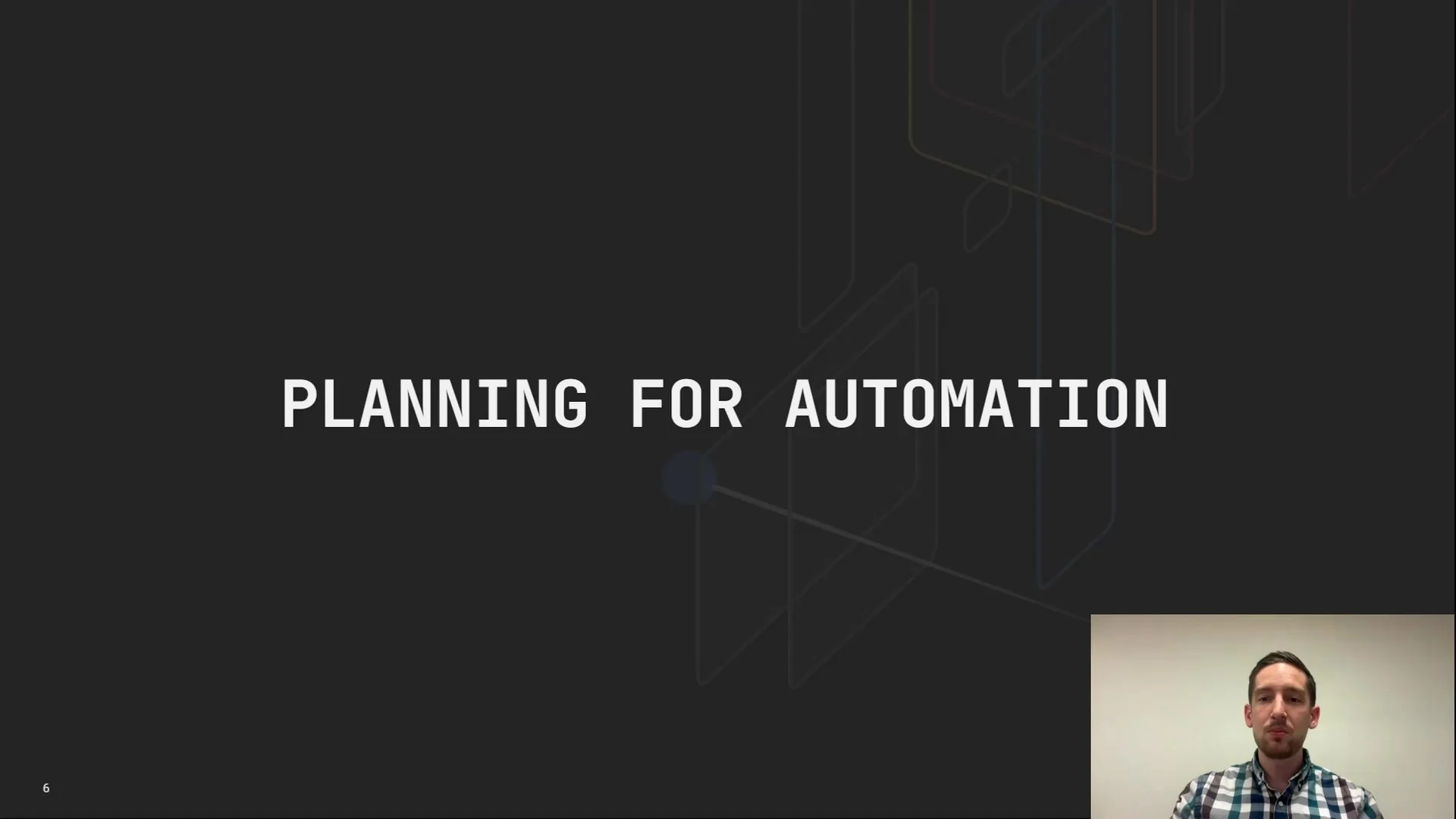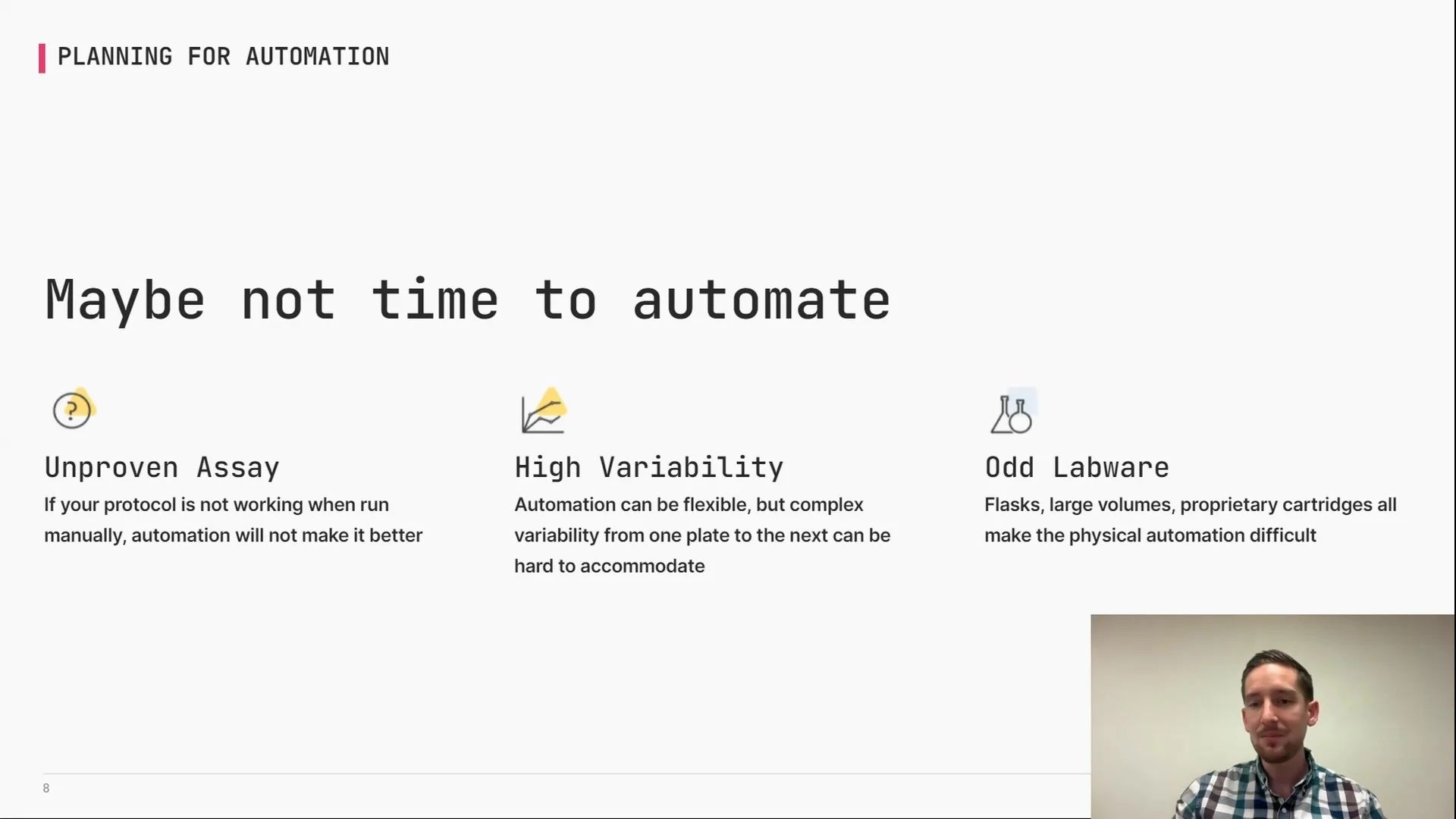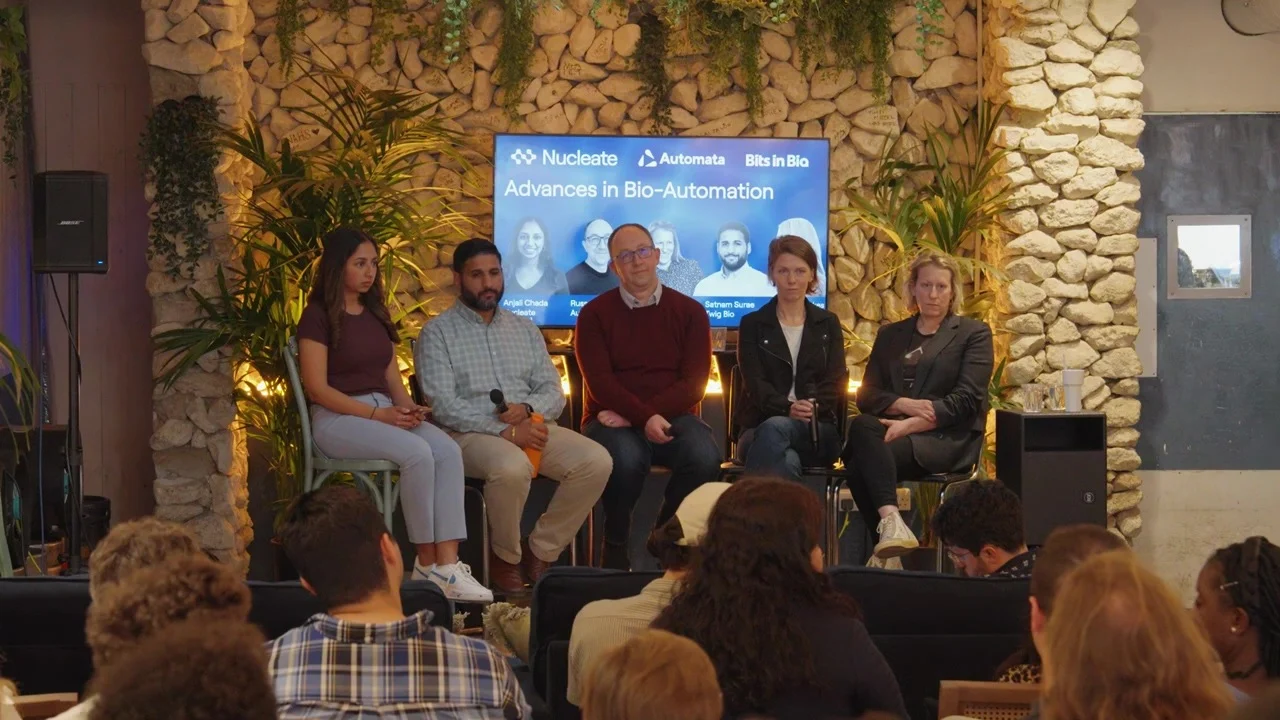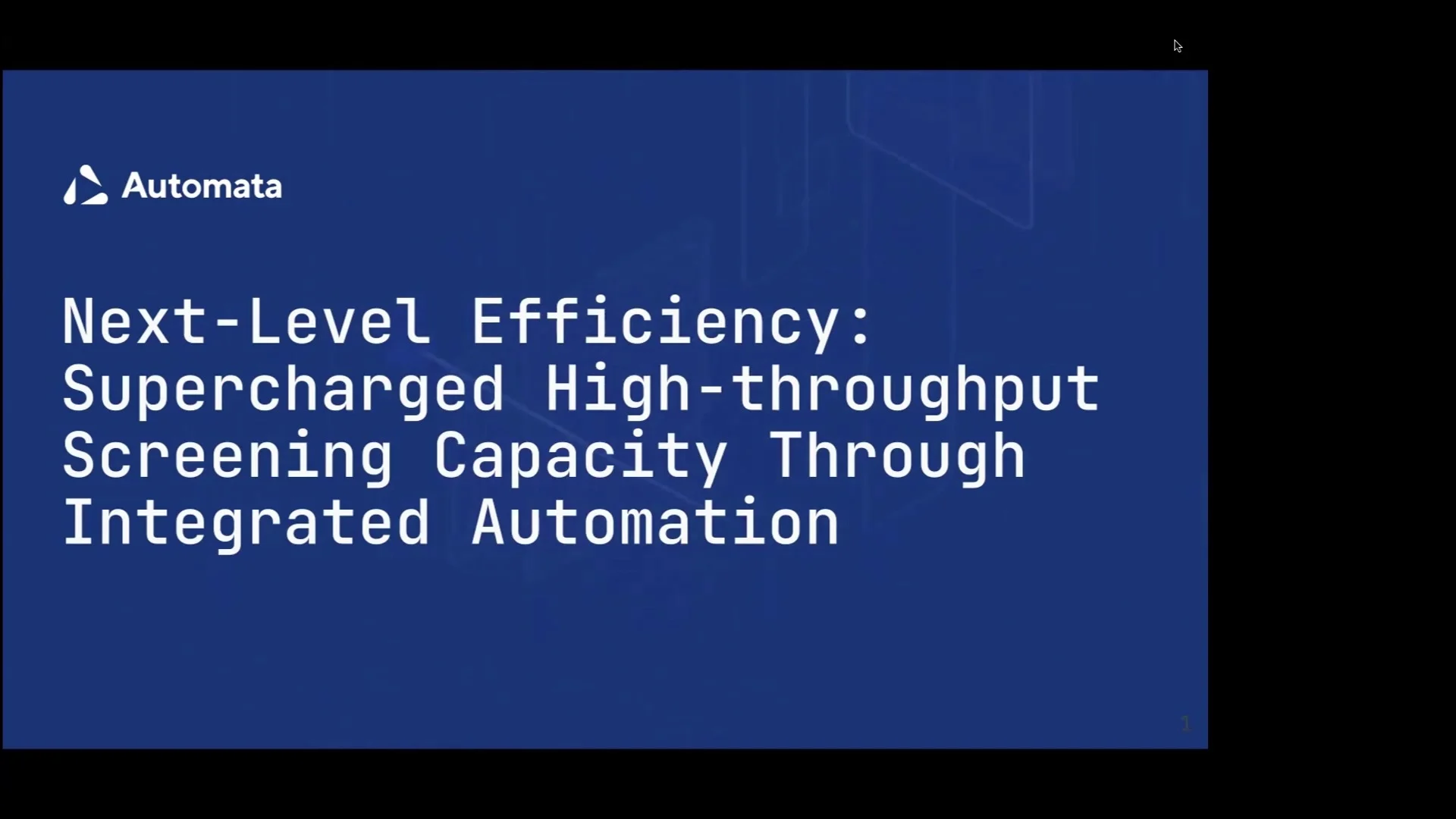Lesson 1:
Is your lab ready for automation?
In our first lesson on “How to prepare for lab automation”, we are exploring key considerations for determining if your lab is ready for automation and what the process involves:
- Substantial throughput increase: if your assay demands have increased—say, a task that used to take one person a day now needs to be done tenfold—it might be time to automate. Rather than increasing manual labour, automation can handle the increased workload more efficiently and consistently.
- High-value instruments sitting idle during off-hours: automation can ensure these resources are used more effectively, even when the lab is empty.
- Need for consistency and reproducibility: once set up, automated systems run workflows under the same conditions, delivering reliable results every time.
When automation might not be the right move ⛔:
- Unproven or inconsistent assays: if your assay is still in development or shows significant variability, it’s best to stabilise it first. Automation won’t fix fundamental issues with the assay itself.
- Complex or variable workflows: consider streamlining or standardising your workflows before investing in automation.
- Non-standard labware: most automation systems are optimised for standard labware (like 96 or 384 well plates). If you frequently use non-standard containers, automation might be more complex and less effective.
Video watch time: 6 min | Presented by: Jesse Mayer
Lesson 2:
Validating in-silico drug design with Quantum and AI
As your lab moves beyond automated liquid handlers to more complex workflow automation, using an end-to-end lab automation platform and partnering with an experienced automation provider becomes essential. A knowledgeable partner can help you navigate the intricacies of lab automation, leveraging their industry expertise to ensure your project’s success.
When working with an automation partner, you can expect a structured approach that typically includes these key steps:
Final proposal: the process concludes with a detailed project proposal, often referred to as a URS (User Requirements and Specifications), which outlines the entire system, devices, timelines, and expected outcomes.
Initial consultation: the process begins with an introductory call to understand your lab’s needs. You’ll meet with both a sales and technical representative to discuss timelines and technical requirements.
Define throughput needs: it’s essential to specify your required throughput—whether it’s modest or extensive—to guide the design of a solution that fits your goals without being over- or under-engineered.
Evaluate equipment compatibility: assess your current lab equipment for automation readiness. Some devices may already be automation-friendly, while others might require upgrades or replacements.
Identify bottlenecks: identify potential bottlenecks in your workflow to ensure that automation speeds up your entire process, not just isolated steps.
Solution refinement: after the initial design is presented, expect a phase of iterative refinement to fine-tune the system to meet your exact requirements.
Video watch time: 8 min | Presented by: Jesse Mayer
Lesson 3:
Deploying your lab automation solution
Third lesson is all about the deployment process, where we’ll walk you through the essential steps to ensure a successful implementation of any lab automation system.
1. Planning and initial setup
Here, the project scope is defined, and the timeline for deployment is established. Your automation partner should be mapping out your workflows and ensuring that all necessary equipment and software are accounted for.
2. Construction and configuration
Once planning is complete, the construction of your automation system begins. This typically occurs at partner’s facilities, where the system is assembled and configured according to the lab’s specific needs. During this time, any equipment you wish to integrate or test will be incorporated into the system.
3. Factory Acceptance Testing (FAT)
After assembly, the system undergoes Factory Acceptance Testing (FAT). This is a critical stage where dry runs of your workflows are conducted to ensure all components are functioning correctly.
4. On-site build and Site Acceptance Testing (SAT)
Following FAT, the system is disassembled, transported to your lab, and reassembled on-site. Your provider will then proceed with Site Acceptance Testing (SAT), a process that mirrors FAT but in the end user environment. This ensures that the system operates smoothly under real-world conditions and that any issues identified during FAT have been resolved.
5. Post-deployment support
The first month post-deployment involves on-site expert assistance to ensure a smooth transition, providing immediate help and training. Following this, a post-deployment support phase offers ongoing remote troubleshooting and support for system expansions or modifications as the lab’s needs evolve.
Video watch time: 6 min | Presented by: Jesse Mayer
Lesson 4:
Creating an effective scientific automation team
Building an automation-first company may mean rethinking the structure and composition of your team.
As automation technology has advanced, there’s been a noticeable shift towards a greater emphasis on data science and a developer-first approach. This shift has reduced the reliance on traditional graphical user interfaces and increased the need for deep technical integration.
Centralised automation systems are proving more effective at maximising uptime and offering flexibility than disparate cells of automation are capable of. Your automation engineers will play a critical role in achieving this centralisation and interconnectivity, particularly as they push the boundaries with self-healing robotics and innovate ways to minimise human intervention.
Moreover, fostering an interdisciplinary approach within your team is essential.
Cross-disciplinary literacy – where biologists understand coding and data scientists grasp biological processes – is becoming increasingly important. This convergence not only boosts collaboration but also drives innovation, making your automation efforts more successful.
Action step: Evaluate your current team composition and consider how you can foster greater interdisciplinary literacy. Think about how centralising your automation systems could benefit your operations and explore opportunities to innovate with the latest lab technologies.
Video watch time: 6 min | Presented by: Russell Green, Satnam Sura, Lily Wollman, Maureen Makes
Lesson 5:
How automation transforms High-Throughput Screening: a use case
This lesson focuses on a highly requested topic in automation: high-throughput screening (HTS). We aim to bring our previous lessons to life with a practical example.
High-throughput screening plays a vital role in drug discovery, involving the testing of many compounds in different combinations and concentrations. To achieve maximum speed, it’s essential to go beyond basic automation and implement an end-to-end integrated system.
In the video, you’ll see how a fully automated high-throughput assay works. This system allows for the generation of more data without increasing error rates. It uses high-capacity incubators and plate hotels, enabling a single setup to handle up to 100 plates per day. This efficiency makes it possible to test 10,000 compounds across 5 cell lines in just 1.5 days.
The system also includes duplicate instruments, allowing multiple plates to be processed at once. This redundancy ensures that even if errors occur, the workflow can continue smoothly.
Video watch time: 38 min | Presented by: Alice Tome-Fernandez
Lesson 6:
Bonus: AI integration
We wanted to include a bonus video about one of the hottest topics right now: how AI is transforming lab automation, specifically with the “lab in the loop” concept.
In this video, experts explore how Large Language Models (LLMs) are going beyond their traditional uses. They help with everything from analysing complex data sets to reviewing legal documents, making research operations smoother and saving time.
The process begins by organising data from different sources and ensuring it’s consistent. This turns chaotic data into a structured format that AI can analyse effectively. Think of it like managing a three-part harmony:
- Planned actions: what you intend to do in your experiment.
- Actual outcomes: what actually happened during the experiment.
- Raw data: the basic results that lead to further insights.
Automation plays a crucial role in managing these elements, making sure the data is standardised and ready for AI analysis.
The AI/ML advantage
AI and machine learning (ML) are like a set of specialised tools, each designed for specific tasks. For instance, AI helps with metabolic mapping using Monte Carlo simulations and enzyme engineering with Bayesian optimisation. Rather than being a one-size-fits-all solution, AI and ML work together to improve processes and experimental results.
Video watch time: 5 min | Presented by: Russell Green, Satnam Sura, Lily Wollman, Maureen Makes






